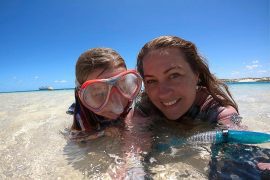What to do?
There is a wealth of current data on bullying. Canada has taken a stance to prevent and stop violence in and outside of the classrooms. Projects, such as the Dove Self-Esteem, provide a great way for teachers and other educators to become informed and aware of how to treat certain issues that occur between those vulnerable ages. Although the program is targeted for females it is also quite appropriate and adaptable to present its message in front of a mixed gendered audience.
From the Department of Psychology, Queen’s University, Wendy M. Craig explores bullying and how to put an end to it. She examines possible causes of bullying and how to help children turn around to gain a positive self-reflection. This source is current, local and valid which provided an excellent addition to support my Action Research Project.
The professional magazine, Education Today, examined bullying in their entire fall 2008 edition. Education Today specifically examined gender-based bullying and recognizing bullying in and out of the schools. As the featured article one can determine that this is prevalent issues in our Canadian schools. In conclusion, “for school authorities, recognizing the signs of bullying and hate-related victimization and understanding how to respond appropriately are essential skills for creating safe school environments” (Clarke, 2008). All stakeholders need to work together, “to reduce the frequency of bullying and hate-related crimes within their schools” (Clarke, 2008).
Things to keep in mind!
- How you respond to concerns of a student has a direct effect on their self-esteem.
- Preventative and reactive measure may have a more profound effect on their well-being.
- To remember that even a small change of you standing up for a child could have profound affect on them.
- Acknowledge and validate their feelings instead of criticizing them.
- “While there are differences, bullying and hate-related offences have some elements in common” (Clarke, 2008).
- “Victims rarely have the problem-solving skills necessary to deal appropriately with being bullied” (Clarke, 2008).
- Look into programs such as, ‘Dove Self-Esteem’, ‘Roots of Empathy’, ‘P.A.L.S.’, ‘S.N.A.P.’ to bring the student body together working on common (positive!) goals.
- Begin a community engagement event, such as a fundraiser. Have each grade or division work on a task to create a successful event.
- “Every school has a safe schools team that looks at the culture within the school, and principals work with superintendents in deciding when to report to parents or to community partners such as the police or the Children’s Aid Society” (Chernos, 2008).
In collaboration with families, schools and community supports, we can work together to increase our children’s self-esteem and in-turn, reduce bullying.
Lisa Hogan, MEd., BEd., OCT, BASc. & ECE, lives in Ontario, Canada.










